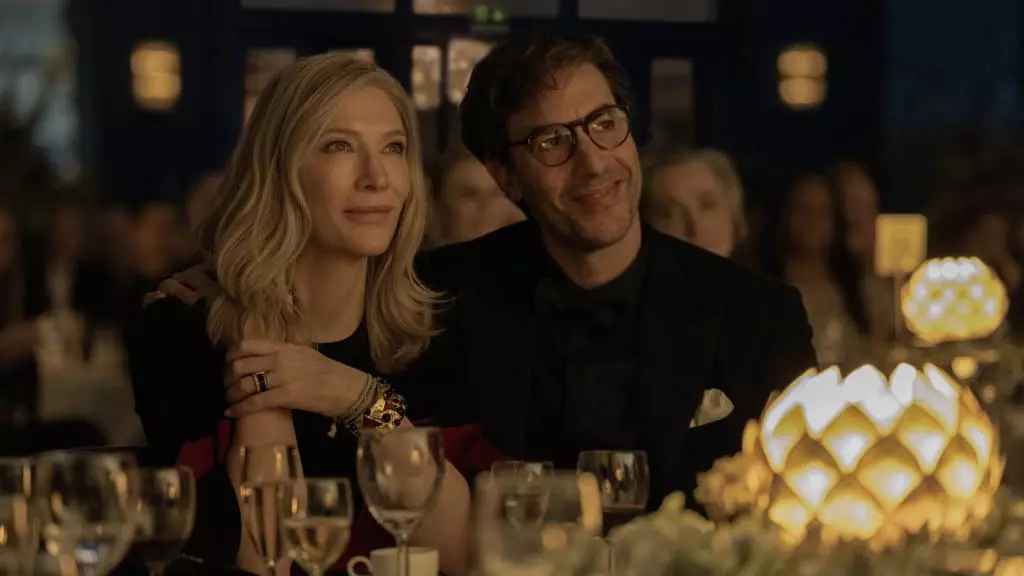The realm of film production has undergone an extraordinary transformation since the golden age of Hollywood, represented by titans like David O. Selznick, Sam Goldwyn, and Darryl F. Zanuck. Their very names evoke imagery of demanding oversight, a strict adherence to traditional storytelling, and a relentless pursuit of box office success. As we navigate the complexities of modern filmmaking, where influencers, YouTube stars, and the ever-adapting streaming landscape dictate new norms, one cannot help but ponder how these legendary producers would have fared in today’s unpredictable creative environment.
David O. Selznick’s reputation as a controlling producer is well-documented. His relentless involvement often extended to interrupting pitches, altering scripts during production, and maintaining an avalanche of correspondence filled with edicts for filmmakers like George Cukor and King Vidor. An analysis of Selznick’s methodologies reveals a deep-seated adherence to the notion that mastery over production equated to artistic integrity. He believed that without his rigorous oversight, cinema would veer into chaos, consistent with his meticulous approach to projects such as “Gone With The Wind.”
Imagine if Selznick operated in today’s landscape, where digital creators wield substantial influence and audience engagement can be achieved with a single viral moment. How would he respond to the freewheeling nature of social media-driven narratives or experimental storytelling embraced by filmmakers like Alfonso Cuarón? The sheer unpredictability of contemporary producers would have likely sparked incredulity in a figure like Selznick, whose style may seem archaic when placed alongside the innovative methods of today’s top-tier creators.
A New Wave in Filmmaking: The Case of Alfonso Cuarón
Enter Alfonso Cuarón, a filmmaker recognized for his significant contributions to both Mexican and American cinema, characterized by his elegant visual storytelling and experimental narrative structures. His recent series, “Disclaimer,” stirred varying degrees of praise and critique, echoing the convoluted themes that define his signature style. The narrative following a documentary filmmaker entangled in a tragic past exemplifies his penchant for complexity, only to face the scrutiny of modern audiences conditioned by rapid consumption and less patience for narrative intricacies.
While Selznick may have bombarded Cuarón with memos regarding pacing, character development, and other minute details, the present atmosphere encourages filmmakers to embrace their creative freedom. Cuarón’s ability to assemble a feature-level cast, including Cate Blanchett and Sacha Baron Cohen, while also sparking discussions on the layers of his narrative, showcases the shift from top-down production oversight to an environment that appreciates artistic exploration.
The chief difference between the old guard of Hollywood and today’s avant-garde creators lies in the internal politics of production. Selznick’s era demanded a polished and formulaic approach to filmmaking—a stark contrast to the experimental, often raw narratives pushed forward in spaces like streaming platforms. This new paradigm fosters an environment dominated by multitudes of voices and perspectives, where the emphasis on authentic storytelling frequently clashes with the expectations set by traditional production values.
Take, for example, the potential resurgence of literary adaptations, such as the renewed interest in classics like “Wuthering Heights,” spearheaded by modern filmmakers like Emerald Fennell and Margot Robbie. They operate free from the creative constraints typified by industry moguls of the past, which leads to discussions around narrative authenticity that often lacked in earlier adaptations. Selznick, with his penchant for meddling, would have undoubtedly had a field day crafting his vision of such a story, all while sending memos aplenty to ensure compliance.
As cinema continues to evolve, the need for a balanced approach between innovation and tradition becomes increasingly paramount. The modern filmmaker must navigate the challenges posed by both creative integrity and market viability—a duality that Selznick and his contemporaries might not have had to contend with in the same way. Understanding the need for creativity within contemporary storytelling also necessitates embracing collaborative ecosystems that prioritize diverse voices to craft narratives reflective of societal progress.
Thus, the crux of the matter lies in how new-age creators can maintain the spirit of artistic pursuit while avoiding the pitfalls of overreach characteristic of the Selznick era. The dialogue between the independent spirit of modern creators and the lessons of past industry giants serves as a vital roadmap for the future of filmmaking, illuminating the pathways that encourage evolution while respecting the legacy of cinematic artistry.
Both the past and the present offer invaluable insights into the complexity of the film industry, prompting us to consider not just how filmmakers express their art, but the environments that cultivate these expressions. As we usher in this new era, it is essential to remain open to innovation while acknowledging the foundations laid by giants of cinema, creating a dialogue that enriches the narrative of film for generations to come.

Leave a Reply